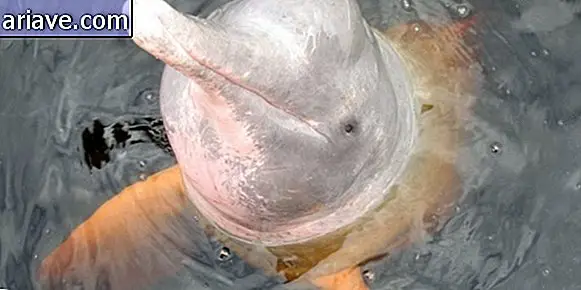10 hairy curiosities about mammoths
The African elephant is the largest land animal today, and its about 3 meters high and 12 tons in weight are enough to intimidate anyone who finds it. Now think about what it is like to come across a kind of pachyderm that can reach 5 meters in height, weigh 20 tons and have huge ivory tusks and a thick coat of hair. It was this kind of creature that had lived with men for over 4, 000 years. But even with all this force and grandeur, the mammoths are extinct, and we are here. What happened?

Here are 10 hairy curiosities about mammoths:
1. Extinction vs. religion
The first time a mammoth fossil was identified as being of a different species from the elephants that were known on the planet was in the eighteenth century; responsible was the Frenchman George Cuvier, also referred to as the "father of paleontology". At that time Charles Darwin was not even born, much less the concept of evolution and natural selection of plants and animals.
Thus, the discovery of being brought into debate the dogma that God had made a complete world with perfect creatures and in sync with the environment. It was proven that one of these works could not survive time and was forever extinct from the Universe. Or until any of them are cloned ...

2. Global warming vs. man
The mammoth is one of the longest surviving animals on Earth, with fossils dating back to about 4, 000 to 5 million years ago, but the determining factor in its extinction has not yet been fully discovered. According to studies, a steep decline in the population of the species began at the end of the last Ice Age approximately 12, 000 years ago.
If you stop to think, with how much hair the animal had, it seems simple to answer that the rise in the planet's natural temperature was responsible for its disappearance, but the real reason may have been us. With millions of years of history and adaptations, mammoths have survived many of the planet's hot and cold periods, but it was precisely when man came to hone his hunting techniques that they ceased to exist.

3. Around the Mammoth World
Although we usually link mammoths to snow, it is not true that they survived only in extremely cold environments. Its fossils have been found in North America, Europe, Asia, and even Africa, which even in glacial periods on the planet was not usually completely covered with ice.

4. On death row
Extinctions hardly happen overnight, but over many years, with factors that cause a decrease in the population of a species. With mammoths it was no different, and some believe that small groups of the animal lived “by leaps and bounds” until about 2, 000 years ago - when the great pyramids of Egypt had already been built, for example.
During this long road to disappearance, the remnants suffered several genetic mutations that negatively dominated the lineage. The finding was made from comparisons between newer and older fossils. According to scientists, the health of the last of these beings went from bad to worse, and was likely until they had lost the color and thermal insulation of their thick layers of hair.

5. Size is document?
Whenever we hear about mammoths, we think of beings with monstrous proportions, but the truth is that several subspecies of the hairy elephant would not put our current pachyderms to run, no. Fossils found on the island of Crete, for example, show that some adults were only a meter high, about the same as a cub of the contemporary species.

6. Counting birthdays
Speaking of size, the mammoth's fangs could be up to 10 feet long and weigh more than 200 pounds, but more impressive than that was its structure. Just as we can stipulate the age of trees by counting the number of rings on their trunk, we can also specify how many years each animal lived through the ivory's natural growth marks. This feature can be observed in both males and females and also provides information such as the number of pregnancies throughout life.

7. The Frozen Treasure Race
It is estimated that there are more than 10 million carcasses of these beings under the Arctic ice. With the average rise in the Earth's temperature, more and more discoveries are being made, according to the melting rate of the polar ice cap, and by people with more commercial than scientific interests. A single preserved prey that serves as raw material for ivory could be worth over $ 35, 000! In Siberia, “mammoth hunter” is a profession that has been around for a long time.

8. Mammoth Barbecue
It's not difficult for a mammoth carcass to emerge out of nowhere in the arctic white expanse. There are so many cases of animals found extremely preserved because of the action of ice that there are even stories (or legends) of explorers who tasted a little of prehistoric meat.

9. Mammoth 2.0
Even preserved on ice, extinct animals rarely have their complete DNAs for laboratory analysis and reproduction. However, advanced genetic techniques already allow the code to be synthesized artificially, creating an alternative in the search for the return of mammoths to life.
According to studies led by Harvard University scientist George Church, the genetic similarity between current elephants and their distant cousins is about 99.5%, which facilitates hybrid cloning in the future, giving rise to brand new ones. Elemutes or mamulefantes.

10. In Search of the Perfect Clone
In 2013, a team of Russian researchers discovered a carcass so preserved that it even shed blood during excavations. Despite having excited cloning enthusiasts at first, the liquid is still being analyzed today by the Sooam Biotech laboratory in South Korea, which has not yet found a single cell with intact genetic material.












